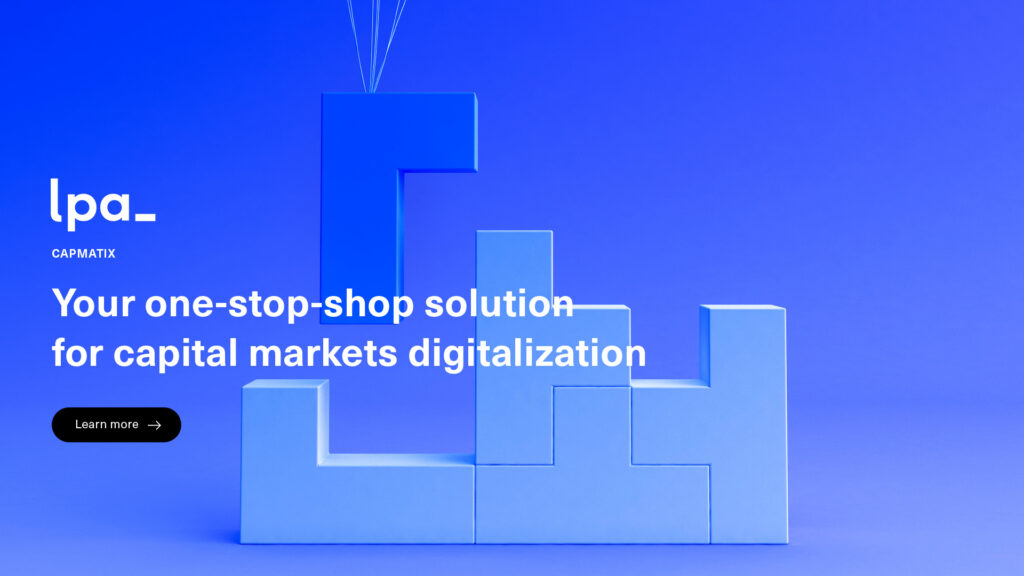
Consulting | Digital Transformation
Capital Markets Digital Transformation – Stepping Up the Pace
Written by Christopher Garner
Apr 5, 2022
Digital transformation in Banking and Capital Markets has been a ‘thing’ now for quite some years. This article outlines a practical approach for the sector to accelerate that transformation.
Driven by the need to deal with a fixed cost base resulting from a combination of; legacy platforms, increasing competitiveness and regulatory compliance, the digital transformation of processes, workflows and content generation has been a key topic of debate.
New technologies such as AI, machine learning, API connectivity etc. have been great enablers of progress. The possibilities to increasingly digitise and automate operational workflows bring increased efficiency, as well as revenue generation and better client connectivity.
Capital markets, are (possibly incorrectly) seen by some to be a laggard when compared to the finance sector as a whole which in itself is one of the leading exponent industries for digital transformation. One can readily understand why decision makers are reluctant to change proven manual processes that support significant value transactions. However, the reality has been somewhat different in that leading capital markets operators have driven digitisation in order to increase competitiveness and build the business.
Many capital markets trades are consistent and follow logical patterns. Complexity arises from both an externally changing environment and commercial considerations which necessitate the involvement of numerous departments and other third-party stakeholders. Well-designed and maintained software systems can handle this. Nobody would argue that IT systems are so much better at managing the required workflows to communicate information to process a capital markets trade. From pre-trade drafts, through approvals, execution and onwards to post-trade settlement. IT systems are designed to manage consistency, efficiency and compliance covering content such as; product information, legal documents and transactions and all the time coordinating across multiple systems, departments and organisations.
Accelerating Transformation
So the digitisation argument is clear. Therefore, what should be the steps for those wishing to take action?
Wholesale transition is complex and risky, so consider a step-change approach such as that made possible by a document generation & process automation solution from LPA called Capmatix. The system consists of modules that can be used as building blocks within a banks digital setup. Each module is highly configurable and fits seamlessly into an existing digital infrastructure.
By adopting one application (module), a bank has the opportunity to test and gain practical experience through usage in order to make an objective decision to adopt in other areas. Capmatix can be applied across a bank or any other financial institution hence giving a long-term framework around one tool integrating with the core system.
Digital transition is evolutionary and not revolutionary. New systems must integrate and connect with existing systems until it becomes apparent that it is safe to decommission any, no-longer desired, legacy systems. Additionally, connections to the correct external parties (e.g. for certificate issuance) is an integral feature. To avoid the risk of arriving at multiple systems over time, Capmatix has the flexibility to generate any kind of document and follow any prescribed process.
Many different documents (e.g. KIDs, Term sheets, CSAs, certificates or other content such as the website) can have consistent elements. The system ensures that when an element is created, that it is utilized across other documents and content ensuring complete consistency. This extends to a very granular level of permissioning and approvals for any variations. Furthermore, all changes are ‘versioned’ therefore, system owners, users or auditors always know who made any change, when and who approved it.
As Capmatix is a framework, designed, built and implemented by people who understand banks and capital markets, the solution can be adopted over time, driving cost savings by gradually enabling legacy systems to be decommissioned. Process efficiency enables scale (achieving more with the same resource) and mitigates risk-costs.
Hear What Our Clients Say
A partnership with one of southern Europe’s largest banks to implement a structured retail product workflow processing system enabled a ‘click to trade’ structured product sale with lower notionals than many competitors. Competitiveness was further increased as system efficiencies meant that clients could receive quotes in a matter of seconds.
A major global banking and financial services company approached LPA to install a digital client interaction tool to improve regulatory compliance and client experience in corporate treasury sales. The benefits were a reduction in processing time of over 80%. This meant that revenue earning front office staff could complete administration for each advisory much quicker driving higher revenues. Additionally, the bank were able to manage a phased decommissioning of 9 legacy systems which were each replaced by the Capmatix tool.
In order to automate the issuance process of structured retail products, a leading Northern European securities services provider and Savings Bank asked LPA to apply the Capmatix solution. Low code software enabled independent design of workflows, creation of new documents and addition of new products. The fully compliant issuance process provided scalability enabling the bank to become one of the leaders in their key markets.
One of Europe’s leading universal banks commenced a project with LPA to configure a Post Trade system for Settlement Processing (Confirmation Generation & Matching etc.). The resulting efficiency gains and decommissioning of legacy systems provide a powerful client reference that can be shared at proposal stage with further clients.
For more detail on these client case studies and to learn about LPA and Capmatix, contact us at any of these email addresses:

- Germany – contact@l-p-a.com
- UK / Ireland – contact.uk@l-p-a.com
- Switzerland – contact.ch@l-p-a.com
- France – contact.fr@l-p-a.com
- Spain – contact.esp@l-p-a.com
- USA – contact.us@l-p-a.com
- Israel – contact.il@l-p-a.com
- Singapore – contact.sg@l-p-a.com
Related News
Written by Sandro Schmid
Discover the Art of Generative AI
8 Mar, 2024
Written by Sophia Pfannes
Solving the Paradox Between AI Aspirations and Persistent Paper Requirements in Financial Documentation
21 Dec, 2023
Written by Sahak Artazyan
Navigating the Future of the Structured Products Market
21 Dec, 2023
Written by Gonzalo Plana
At the forefront of RegTech: a chat with Navin Sangtani, LPA’s Client Delivery expert
21 Dec, 2023
Written by Charles Kim-Régnier
Comparing Structured Products in Europe and Asia
21 Dec, 2023
Written by Julie Bradini
A Beginner’s Guide to Crypto and Blockchain in Structured Products
21 Dec, 2023